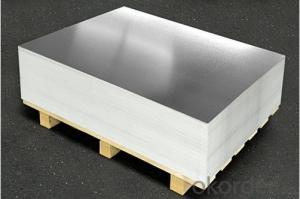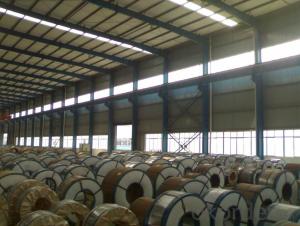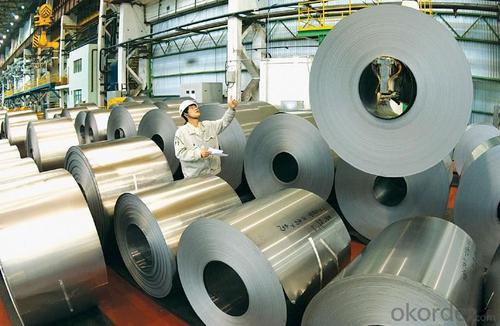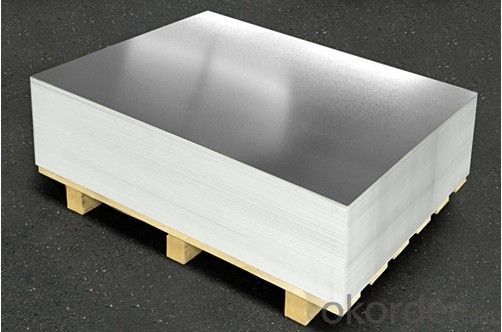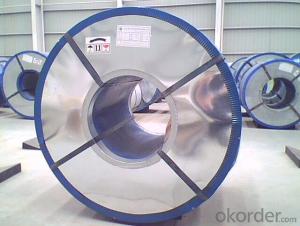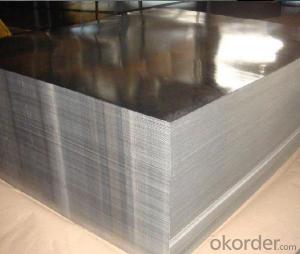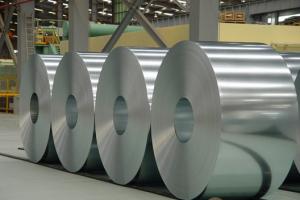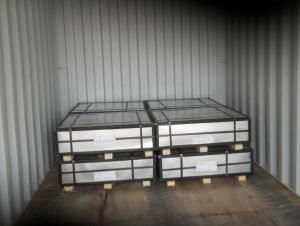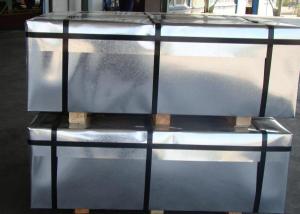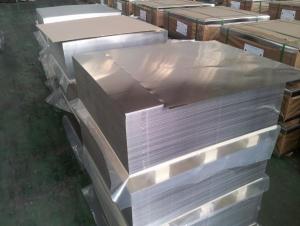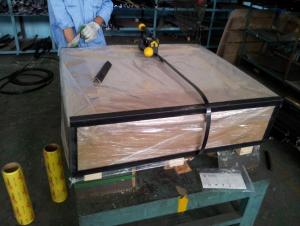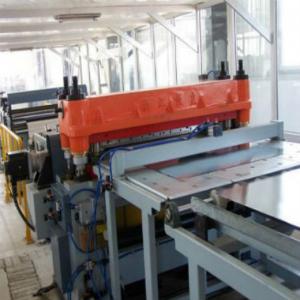Electrolytic Tinplate for Food and Chemical Packaging
- Loading Port:
- Tianjin
- Payment Terms:
- TT OR LC
- Min Order Qty:
- 25 m.t
- Supply Capability:
- 7000 m.t/month
OKorder Service Pledge
OKorder Financial Service
You Might Also Like
1.Structure of Electrolytic Tinplate for Food and Chemical Packaging Description
Electrolytic Tin Plate Coils and Sheets for Foods Metal Packaging, is one thin steel sheet with a coating of tin applied by electrolytic deposition. Tinplate made by this process is essentially a sandwich in which the central core is strip steel. This core is cleaned in a pickling solution and then fed through tanks containing electrolyte, where tin is deposited on both sides. As the strip passes between high-frequency electric induction coils, it is heated so that the tin coating melts and flows to form a lustrous coat.
2.Main Features of the Electrolytic Tinplate for Food and Chemical Packaging
Appearance – Electrolytic Tin Plate is characterized by its beautiful metallic luster. Products with various kinds of surface roughness are produced by selecting the surface finish of the substrate steel sheet.
Paintability and printability – Electrolytic Tin Plates have excellent paintability and printability. Printing is beautifully finished using various lacquers and inks.
Formability and strength – Electrolytic Tin Plates have got very good formability and strength. By selecting a proper temper grade, appropriate formability is obtained for different applications as well as the required strength after forming.
Corrosion resistance – Tinplate has got good corrosion resistance. By selecting a proper coating weight, appropriate corrosion resistance is obtained against container contents. Coated items should meet 24 hour 5 % salt spray requirement.
Solderability and weldability – Electrolytic Tin Plates can be joined both by soldering or welding. These properties of tinplate are used for making various types of cans.
Hygienic – Tin coating provides good and non toxic barrier properties to protect food products from impurities, bacteria, moisture, light and odours.
Safe – Tinplate being low weight and high strength makes food cans easy to ship and transport.
Eco friendly – Tinplate offers 100 % recyclability.
Tin is not good for low temperature applications since it changes structure and loses adhesion when exposed to temperatures below – 40 deg C.
3.Electrolytic Tinplate for Food and Chemical Packaging Images
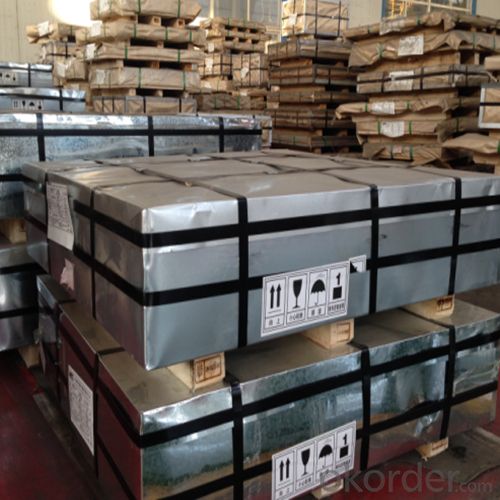
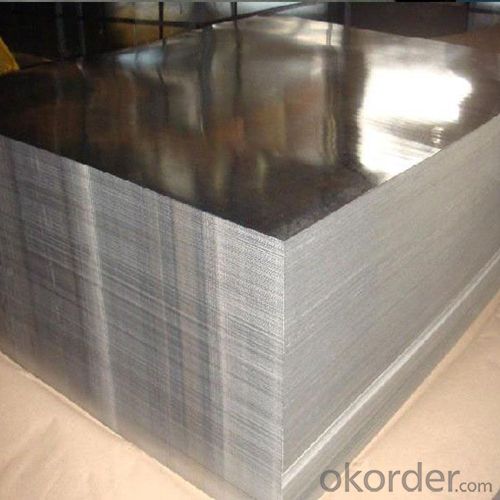
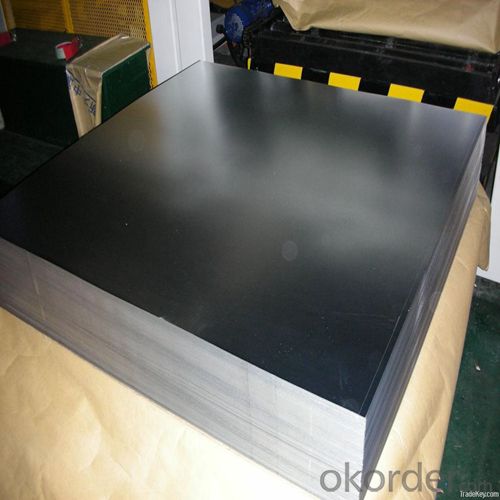
4.Electrolytic Tinplate for Food and Chemical Packaging Specification
Standard | ISO 11949 -1995, GB/T2520-2000,JIS G3303,ASTM A623, BS EN 10202
|
Material | MR,SPCC |
Thickness | 0.15mm - 0.50mm |
Width | 600mm -1150mm |
Temper | T1-T5 |
Annealing | BA & CA |
Coil Inner Diameter | 508mm |
Weight | 6-10 tons/coil 1~1.7 tons/sheets bundle |
Passivation | 311 |
Oil | DOS |
Surface | Finish,bright,stone,matte,silver |
5.FAQ of Electrolytic Tinplate for Food and Chemical Packaging
-What your tinplate material is used for ?
Tinplate is widely used for the packaging of products. Such as food cans,
beverage cans, pet cans, closures, general line cans and so on.
Printed Tinplate is offered!!
-How to place .an order or contact you ?
Please send us Email. we will give you a quick response in seconds .
- How is your quality ?
All our quality is prime even the secondary quality . We have many years experience
In this field with serious quality control standard . Advanced equipment, We welcome your visit to our factory .
- Q: Is tinplate recyclable?
- Yes, tinplate is recyclable.
- Q: What are the main factors influencing the demand for tinplate?
- The main factors influencing the demand for tinplate include the growth in the packaging industry, consumer preferences for canned goods, economic development in emerging markets, and environmental regulations promoting sustainable packaging.
- Q: What are the main applications of tinplate in the marine industry?
- Tinplate is commonly used in the marine industry for applications such as corrosion-resistant coatings for steel structures, manufacturing of storage tanks and containers, shipbuilding and repair, and as a protective barrier in marine electrical systems.
- Q: How is tinplate affected by different types of sauces and condiments?
- Tinplate is generally resistant to corrosion and is not significantly affected by different types of sauces and condiments. However, acidic sauces like tomato-based or citrus-based ones may cause slight discoloration or tarnishing on the tinplate surface over time. To prevent any adverse effects, it is advisable to store sauces and condiments in glass or plastic containers.
- Q: How does tinplate contribute to the reduction of carbon emissions?
- Tinplate contributes to the reduction of carbon emissions through its sustainable production process and recyclability. Compared to other packaging materials, tinplate has a low carbon footprint as it requires less energy and releases fewer greenhouse gases during manufacturing. Additionally, tinplate is a highly recyclable material, allowing for the efficient reuse of resources and reducing the need for new production. By promoting the use of tinplate, we can minimize carbon emissions and work towards a more environmentally friendly packaging solution.
- Q: Can tinplate be used for packaging of flammable liquids?
- Yes, tinplate can be used for packaging of flammable liquids. Tinplate is a durable and corrosion-resistant material that provides a strong barrier against external elements, including flammable liquids. It is commonly used in the packaging of various products, including flammable liquids, due to its ability to withstand the potential hazards associated with these substances.
- Q: What are the common forms of corrosion that affect tinplate?
- Tinplate commonly experiences three forms of corrosion: uniform corrosion, pitting corrosion, and tin whisker growth. Uniform corrosion occurs evenly across the surface, leading to a thinning of the tin coating. Pitting corrosion, on the other hand, creates localized holes or pits, compromising the integrity of the tinplate. Lastly, tin whisker growth involves the formation of tiny, crystalline structures that can lead to short-circuits or other electrical issues.
- Q: What are the main export markets for tinplate?
- The main export markets for tinplate include countries such as China, Japan, South Korea, United States, and Germany.
- Q: Can tinplate be used for electrical applications?
- Yes, tinplate can be used for electrical applications. Tinplate is a thin steel sheet coated with a layer of tin, which provides corrosion resistance and electrical conductivity. This makes it suitable for manufacturing electrical components and devices such as cans, containers, and small appliances.
- Q: Can tinplate be used for packaging fragile items?
- Yes, tinplate can be used for packaging fragile items. Tinplate is a strong and durable material that provides excellent protection against damage. Its resistance to impact and ability to withstand pressure make it suitable for packaging fragile items safely. Additionally, tinplate's ability to resist corrosion ensures that the packaging remains intact and protects the fragile items throughout the shipping or storage process.
Send your message to us
Electrolytic Tinplate for Food and Chemical Packaging
- Loading Port:
- Tianjin
- Payment Terms:
- TT OR LC
- Min Order Qty:
- 25 m.t
- Supply Capability:
- 7000 m.t/month
OKorder Service Pledge
OKorder Financial Service
Similar products
Hot products
Hot Searches
Related keywords


